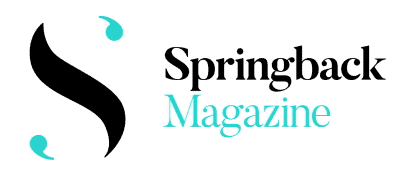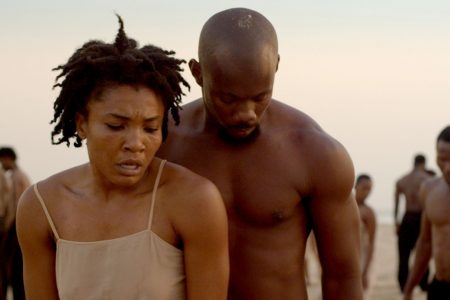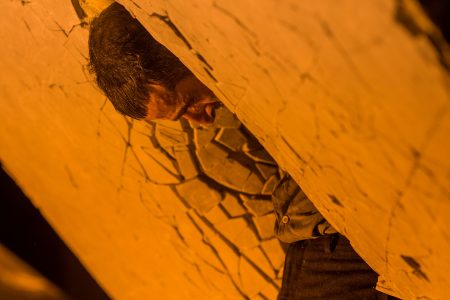The world is a collapsing shit factory, wrote Darren O’Donnell in Social Acupuncture: A Guide to Suicide, Performance and Utopia in 2006 – a blatantly political and not overly pessimistic statement about the future of our consumerist societies and the persistently utopian role of art within them. What’s maybe most disturbing about this statement is that it remains accurate and acutely relevant in the present moment. While reading the news, catching up with the world’s latest attempt to convince us of a futureless, ‘there is no alternative’ fate, I stumbled upon some pictures of the Italian performing group kinkaleri. A slogan, ‘is it my world?’, printed on stickers and placed in various incongruous places, such as a porcelain urinal or a post office box, reminded me of a Dadaist communication tool to invite people to a performance. This crucial and alarming question, ‘is it my world?’, also seemed to capture art’s internecine struggle after the Covid-19 pandemic. Have we become estranged from the world we created?
This unconventional performance is only a part of what kinkaleri call their world. The slogan was initially designed for an initiative – now in its tenth year – that combines residencies, ongoing choreographic research and exchange of ideas with younger artists in their base, spaziok, in Prato (Italy). But foremost the project was about the idea of a shared space that could accommodate critical questioning about the practices and the relations of the people working within the dance field. No wonder that in a moment of artistic stasis, when all the above were suspended, the slogan came to the surface, carrying both an existential and a political meaning.
In fact, the very question became the locus of the performance, which has taken place already in Florence (May 2020) and Rome (July 2020). The participants – potentially anyone in good enough shape to cover the distance – were called to be part of a relay, running while carrying a white flag with the slogan ‘is it my world?’ written on it. The itinerary wasn’t conceived just by taking in mind the kilometric distance; neither sports nor competition is at the heart of kinkaleri’s concept. Instead, what the flag represents in relation to the symbolic value of public space that was in question: the very opening and reclaiming of this space, which after the quarantine became even more vital and evident. Especially in cities like Rome and Florence, once flooded by herds of tourists every day, this remarkable ‘vacancy’ made kinkaleri re-examine the shrinking of public space in comparison to the rising will of citizens to be outdoors again and present.
Interestingly enough, this performance doesn’t have utopian ambitions. It’s simple and fragmentary, furtively political and coyly humorous, if we think of how kinkaleri are subverting the historical significance of the relay and how their performance, without being a parody, re-examines the ambiguous circumstances of its reappearance. It’s a simple act to execute – no extra skills needed, you just take the flag and run – and exemplary of how the will to participate in this relay performs something else than the usual experience of ‘being together’. Without falling into the ideological trap of either extreme individualism, that would favour antagonism between the participants, or extreme collectivism, that would subsume everyone in a higher abstract goal, this relay shows us the middle way: questioning if there is a goal after all, an accomplishment other than just a vague sense of being part of a bigger picture of which the pieces you do not hold. Run, meet the next one, pass the flag on. End? Maybe. But most importantly, resign from the fantasy that you can make a difference, that you are carrying a bigger message to the world. You don’t know whose world this is anyway.








